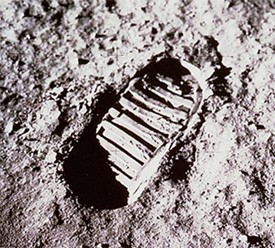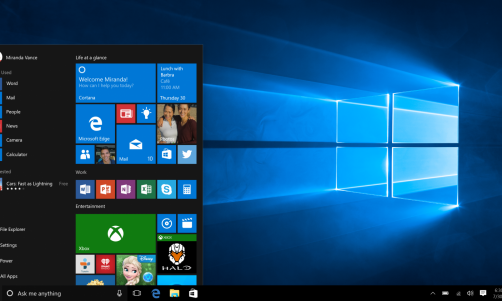"That's one small step for man, one giant leap for mankind."
These were the words of one brave and fortunate astronaut to take humanity's first step towards exploring space, the final frontier.
That iconic moment happened on this day 63 years ago. Since then, we've landed rovers and flew aircraft on Mars, saw Pluto, and even taken a picture of the supergiant black hole in the center of the milky way galaxy.
However, all of these would not have been possible without the brave engineers and rocket scientists at NASA and the astronauts that went to space for the first time on behalf of humanity.
Here is their story:
The Apollo 11 Mission In A Nutshell

One of the first footprints on the moon made during the Apollo 11 mission.
On July 16, 1969, NASA sent three brave astronauts to space on a mission to safely land and explore the moon - a feat that was unheard of before, even in the overarching space race happening at the time.
The astronauts, Neil Armstrong, Michael Collins, and Buzz Aldrin flew to space through NASA's Saturn V rocket from Florida's Kennedy Space Center. They came to space with cameras so that people on Earth could tune into their progress and eventual landing on the moon.
The lunar module the three astronauts were in landed safely on the moon on July 19, at 4:17 pm, on the southwestern edge of the Sea of Tranquility. He then declared that "the Eagle has landed," giving people back on Earth a sign that they made it safely on the moon, per History.
The act alone is an achievement in and of itself. Back then, Soviet and American space agencies were racing to outdo one another in the space race, with the Soviets being at the lead due to Sputnik's success.
Sputnik I, more commonly known as Sputnik, the first artificial satellite that went to space courtesy of the Soviet Union.
Read More: 10 Things to Know About the Mary Rose, the Warship of Henry XIII That Sank on This Day in 1545
That aside, most landings on the moon before were hard landings, meaning that the spacecraft, which were thankfully unmanned, was crashing instead of landing on the surface of the moon.
Meanwhile, in America's case, it eventually earned its first soft landing in 1966 through Surveyor 1 - the first safe landing on the moon, per the Smithsonian.
As such, most if not all of the people in the world witnessed Neil Armstrong be the first to step and walk on the moon. It was at this point that Armstrong said his most famous quote.
However, Armstrong, Aldrin, and Collins may have been stranded on the moon if not for Aldrin's ingenious solution to the broken switch to a vital circuit breaker needed to send electrical power to the lunar module's ascent engine, per a separate History report.
Thanks to Aldrin's quick thinking of using his felt-tipped pen as a substitute for the broken switch, they were able to get back to Earth without any cause of concern.
The three astronauts safely got back to Earth on July 24, per NASA
Apollo 11's Legacy
During the three astronauts' one-day stay on the moon, they were able to collect what would be the first geologic lunar samples, according to the Lunar and Planetary Institute, as well as pictures of the moon's surface.
These discoveries inspired more lunar missions, with five of them being successful. The last time man was on the moon was on December 14, 1972, during the Apollo 17 mission.
However, astronomers' fascinations with the moon and space continued to fester within Earth's confines.
Eventually, these curiosities would be unleashed with the launching of the SLS rocket as part of the Artemis missions, which aims to bring humanity back to the surface of the moon.
Related Article: Japanese Researchers Develop Gravity-Defying Sapce Habitats for Moon, Mars














